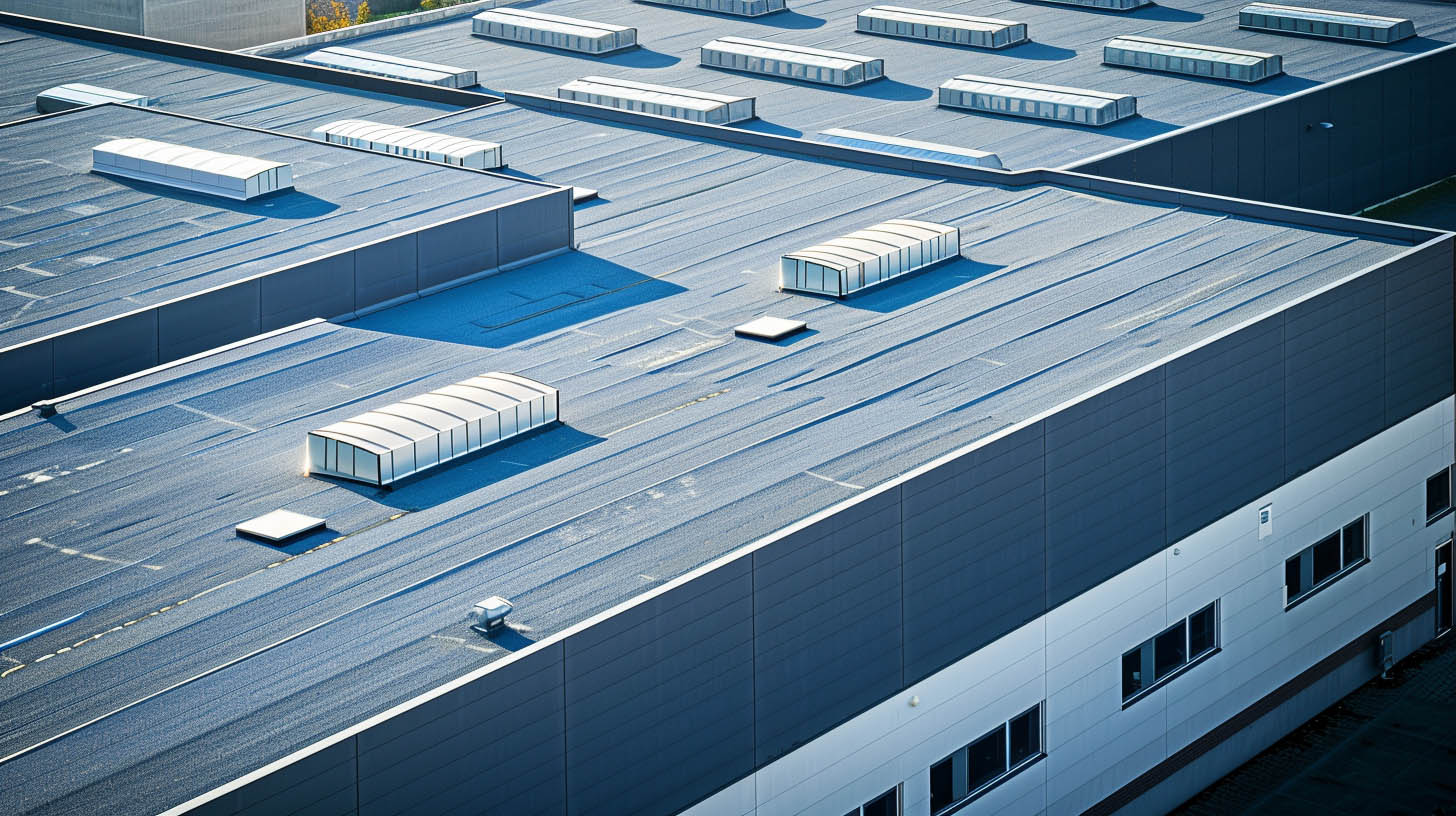Choosing the right roofing system is critical for any commercial building. The roof not only protects the structure from the elements but also plays a significant role in the building's overall energy efficiency and longevity. This comprehensive guide explores various commercial roofing systems, helping business owners make informed decisions based on their specific needs.
Introduction to Commercial Roofing Systems
Commercial roofing systems come in various types, each with unique characteristics and benefits. The choice between these systems depends on several factors including climate, building design, budget, and specific business requirements.
Flat Roofing Systems
Flat roofs are prevalent in commercial applications due to their cost-effectiveness and practicality for accommodating large HVAC systems and other rooftop installations.
Built-Up Roofing (BUR)
Built-Up Roofing, known for its durability, consists of multiple layers of tar and gravel. This type of roofing is valued for its proven track record of resistance against water, wind, and puncture.
Sloped Roofing Systems
While less common in commercial settings, sloped roofs can provide significant aesthetic and drainage benefits, making them an ideal choice for businesses located in areas with heavy rainfall or snow.
Choosing the Right Material
The selection of material should be guided by the building’s location, environmental conditions, and the owner's maintenance capacity.
Metal Roofing
Metal roofs offer longevity, durability, and fire resistance, making them suitable for areas prone to severe weather conditions. Options include steel, aluminum, and copper, each providing a distinctive aesthetic and performance level.
Membrane Roofing
Membrane roofing options like TPO, PVC, and EPDM cater to different needs. TPO is celebrated for its cost-effectiveness and reflective properties, PVC for its durability and resistance to chemical exposure, and EPDM for its long life span and ease of maintenance.
Factors to Consider
Durability and Lifespan
A roof’s lifespan is a crucial consideration. Materials like PVC and metal can last over 25 years with proper maintenance, while others like modified bitumen may require more frequent replacement.
Energy Efficiency
Reflective roofing materials such as TPO and PVC can significantly reduce cooling costs by reflecting sunlight and heat away from the building.
Cost
Initial installation cost versus long-term savings should be evaluated. While some materials may have higher upfront costs, their durability and energy efficiencies provide savings over time.
Maintenance Requirements
Consider the ease and frequency of maintenance required. Some materials may require more frequent upkeep, which can increase overall costs.
Summit Exteriors: Your Trusted Partner in Roofing Excellence
At Summit Exteriors, we understand the complexities involved in selecting the right commercial roofing system. Located in Coeur d'Alene, ID, our team of experts is dedicated to providing top-tier service, guided by honesty and a commitment to quality. As an Owens Corning Preferred Contractor, we offer customized roofing solutions designed to meet the unique needs of each client.
Conclusion
Selecting the right commercial roofing system is a significant decision that impacts the operational efficiency and structural integrity of your business. By understanding the different types of roofing available and considering factors such as durability, cost, and maintenance, you can make an informed choice that will benefit your business in the long run. Contact Summit Exteriors for a consultation to explore the best roofing options for your needs, ensuring your investment is protected and your building is well-covered for years to come.



